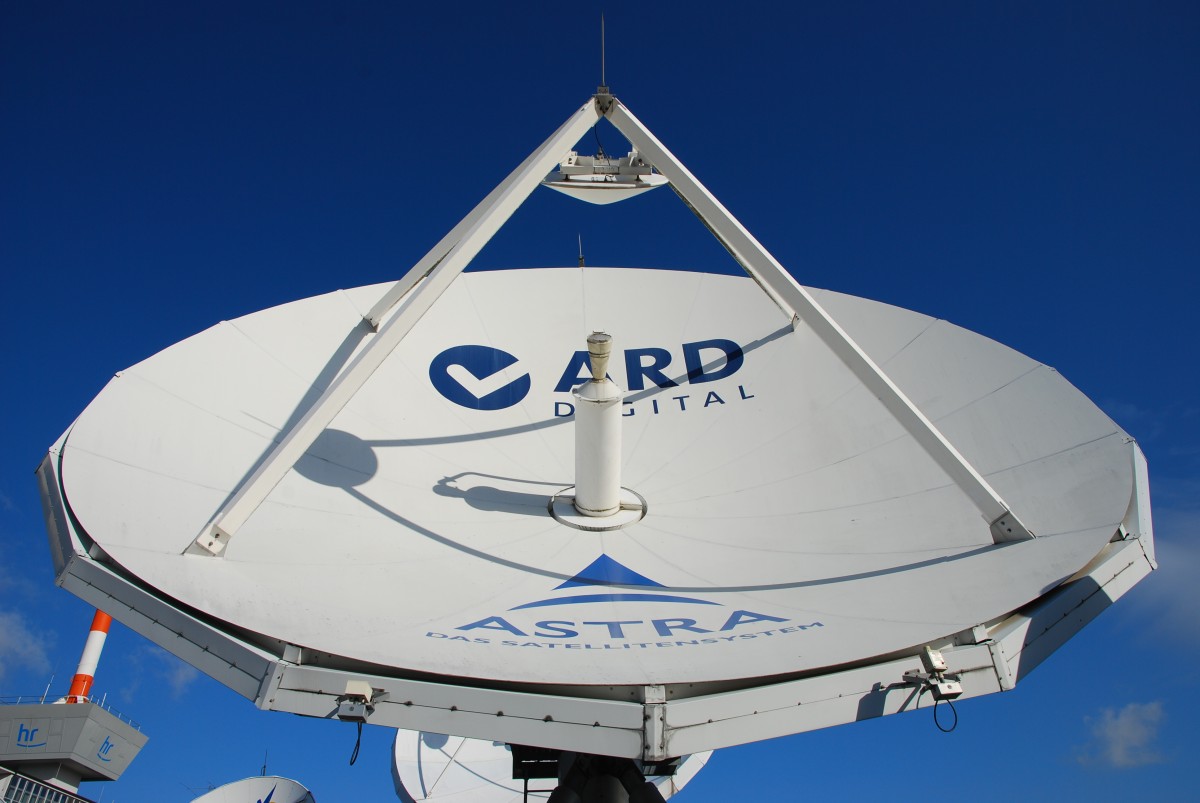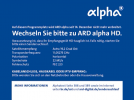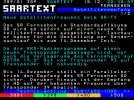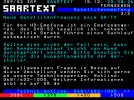The ARD is currently examining whether it will still be broadcasting its television programs via satellite in digital standard resolution (SD) for a longer period of time, thereby taking back the last announced shutdown date for SD broadcasting - January 2021. This was explained on request by the ARD press office, which is currently located at WDR, which will chair ARD in 2020 and 2021. "The ARD is aware that a solid and secure supply of information to the population is essential especially in these times," said the ARD in its statement to the MK with regard to "the current situation around the subject of Corona". At the ARD one clarifies "at the moment whether the programs can be distributed in SD".
In February 2020, the broadcasting network announced that the four jointly operated television programs Das Erste, Tagesschau 24, One and ARD-alpha would no longer be broadcast in SD via satellite (Astra) in January 2021, but only in high-definition image quality (HD). By switching off the SD, the ARD saves "considerable costs". In recent years, "more and more households have switched to better HD quality," it said. The "Digitization Report Video 2019" published by the state media authorities states that 13.8 million of the 17.3 million households in Germany that receive television via satellite already have HD televisions. In the remaining 3.5 million households, HD reception via satellite is not yet technically possible.
ZDF continues to focus on SD distribution
In March 2020, it was also announced that all ARD state broadcasters, except for the MDR, would also like to stop SD broadcasting of their third-party programs via satellite in January 2021. The German-French cultural channel Arte, which ARD and ZDF jointly operate with Arte France, also announced that it would end SD distribution via satellite in January 2021. No further information was available in February or March regarding the SD broadcasting of the Phoenix, Kinderkanal and 3sat programs, which ARD and ZDF jointly organize (with 3sat also with ORF and SRG).
While the ARD decided to switch off the SD satellite broadcast for January 2021, the ZDF then declared in May to keep the SD broadcast. The main ZDF program, as well as ZDFneo and ZDFinfo, will be broadcast in SD beyond 2020 until further notice, according to Mainz. As a reason, the broadcaster referred to viewers who are not yet able to receive television programs via satellite in HD quality, but continue to do so only in the standard resolution. The ZDF did not answer the question of when the SD broadcasting was extended via Astra.
The fact that the ARD decided to end the SD broadcasting of its programs in the satellite area was ultimately due to a decision by the Commission to determine the financial requirements of the broadcasters (KEF). The KEF no longer considers the parallel broadcasting of public television programs in SD and HD quality to be appropriate. This can be read in the 22nd KEF report published in February, with which the Commission determined the budget of the broadcasters for the new radio license period 2021 to 2024. The KEF is of the opinion that, given the current distribution of HD reception from 2021, an additional SD broadcast is no longer economically justified. From that point on, she decided that the broadcasters would no longer be allowed to pay for the SD broadcast via satellite.
The ARD had informed KEF in 2019 that the satellite distribution of its programs in SD quality is still planned for 2021 and 2022. According to the KEF, the costs for this should total EUR 32.7 million. The ARD commission canceled this amount, so that the broadcasting network decided to stop SD broadcasting via satellite. In 2019, the ZDF had no longer registered any costs for the SD satellite broadcast of its programs with the KEF from 2021, so that the KEF did not have to make any deletions here. The broadcaster intends to finance the expenditure that ZDF will incur through the further distribution of SD programs via Astra, as communicated to the MK, "through internal shifts".
The ARD is currently examining how funds from other areas can be reallocated to counter-finance SD broadcast via satellite from 2021. ARD could also negotiate with the satellite operator Astra about cheaper contracts for the SD distribution of its programs. In any case, KEF sees “efficiency reserves” here at ARD in comparison with ZDF. ZDF was able to reduce satellite broadcasting costs by 13 percent in the period 2017 to 2020, according to the 22nd KEF report. On the ARD, on the other hand, this expenditure increased by 7.9 percent, which is almost exclusively due to higher expenses for TV broadcasting (ARD also incurs costs for the satellite broadcasting of the radio programs).
It is now open until when it is clarified whether from January 2021 all public television programs will continue to be available in digital standard resolution via satellite. At first glance, it seems strange that ARD and ZDF have not previously agreed on a uniform procedure in order to avoid confusion in public. But the institutions also have to consider competition law reasons. In 2015, the Federal Court of Justice (BGH) made a fundamental judgment that the public service broadcaster should not discuss the termination of their contracts with one another regarding the cable feed-in of their programs (see this MK notification).
No exit plans for private channels
It is not yet known from commercial television stations that they want to end their SD distribution via satellite in the near future. The two major broadcaster groups, the RTL group and the Pro-Sieben-Sat-1 group, committed themselves to the Bundeskartellamt at the end of 2012 to broadcast certain programs, including via satellite, in SD quality until 2022 (cf. see FK booklet no. 3/13). These are the programs RTL, RTL 2, Vox and ntv as well as Pro Sieben, Sat 1, and Kabel 1.
However, the two TV groups, like most other private broadcasters, should generally have no interest in switching off their SD broadcast signals, either via satellite or in the cable network. After all, they broadcast their programs in high-resolution quality - in contrast to the public channels - most of the time encrypted. RTL, Pro Sieben & Co.'s HD reception is associated with additional costs for television viewers, but a large proportion of them have so far not been able to pay for it. In this respect, switching off SD broadcasting would significantly reduce the reach of commercial television providers and thus lead to lower ratings, which should also have an impact on advertising prices.








